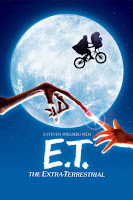Event 3: Mnemoawari by E. Joteva
Couple weeks ago I went to Eli Joteva’s exhibition called
Mnemoawari. It was a three day exhibition, but I went on the first day so I saw
the pieces when they were fully frozen.
The What:
 The first thing I saw when I entered was a sign that
portrayed some sort of timeline. I read through it but I wasn’t sure exactly
what the significance of it was. When I went to the next station, I saw a
projection of a blue circle. The next station was a group of three hanging
spherical ice-sculptures. The first was made of red flowers, and, as it melted,
it dripped a reddish colored liquid. The second was made of sand and
wildflowers and dried vegetation, and it dripped clear liquid (it was also
attached to a sound system that amplified the sound of the drops of water), The
third sculpture was made of fungus and dirt, which also dripped clear liquid. After
that was an interactive VR experience that allowed us to see things as if we
were inside the sculptures. The next station were three projections of each
sculpture.
The first thing I saw when I entered was a sign that
portrayed some sort of timeline. I read through it but I wasn’t sure exactly
what the significance of it was. When I went to the next station, I saw a
projection of a blue circle. The next station was a group of three hanging
spherical ice-sculptures. The first was made of red flowers, and, as it melted,
it dripped a reddish colored liquid. The second was made of sand and
wildflowers and dried vegetation, and it dripped clear liquid (it was also
attached to a sound system that amplified the sound of the drops of water), The
third sculpture was made of fungus and dirt, which also dripped clear liquid. After
that was an interactive VR experience that allowed us to see things as if we
were inside the sculptures. The next station were three projections of each
sculpture.
The Why:
While listening to Eli’s explanation and analyzing the
timeline, I realized that the timeline was an outline of the Mnemoawari
process. It was a guide for the melting paralleled with the retention/loss of
memories. When the sculptures were mostly frozen and melting, they signified
our present, when we store our memories and experiences inside of us. The next
stage (VR) was symbolic of how we reminisce and reflect on our past, and we
re-live definitive moments in our lives. The next stage (when they are all
melted) is not too clear to me, but it seems as if it’s a representation of how
our present is affected by our memories and it is never the same as how we
envision it. The last stage (the projections) was like a representation of the
future. The portraits were similar to the physical sculptures but different and
I think that represents how our futures are determined by our memories of the
past.
I think that this exhibition was extremely intriguing. I
found it so interesting that an exhibition can be a process rather than a piece
of art. This process was over three days, and it had such a deep meaning behind
it, but the actual work was not obvious about stating it. I think that it was definitely
a clever way to combine neuroscience and art, and I appreciate the creative
interpretation of the artist.




Comments
Post a Comment